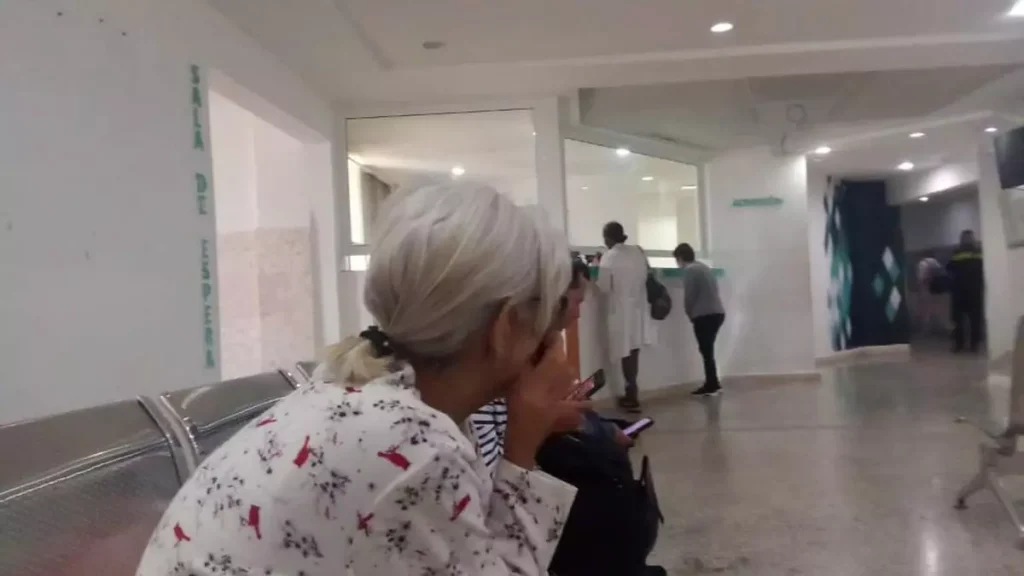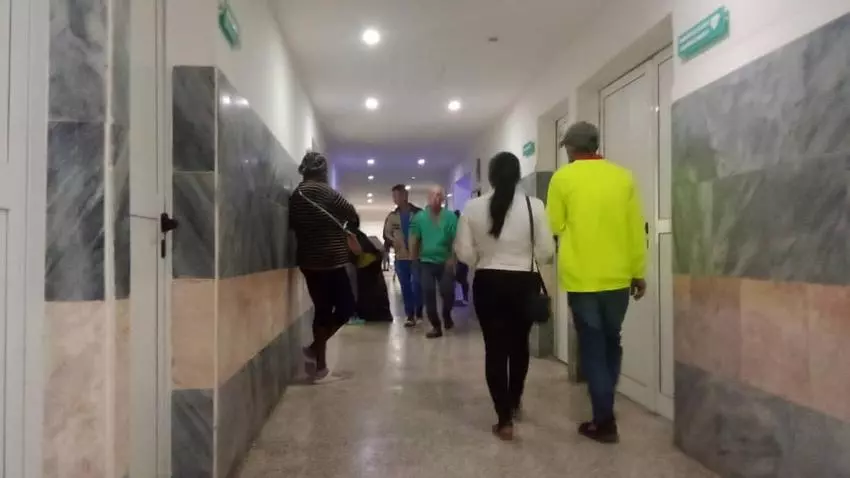In Matanzas, patients with symptoms of chikungunya do not find relief in the line at the hospital

![]() 14ymedio, Julio César Contreras, Mantanzas,November 13, 2025 — The corridor at the Faustino Perez hospital seems to have no end. The white light is reflected in the worn-out tiles, and the air is still, saturated with disinfectant and resignation. It is 8:00 am, and the line in front of the post-arbovirosis clinic now stretches to the end of the corridor. Among those who wait, a woman, walking slowly with bandaged knees and tired eyes, asks if this is where they attend the patients with chikungunya. Her name is Yolanda, and she is 59 years old. For two months she has barely managed to walk.
14ymedio, Julio César Contreras, Mantanzas,November 13, 2025 — The corridor at the Faustino Perez hospital seems to have no end. The white light is reflected in the worn-out tiles, and the air is still, saturated with disinfectant and resignation. It is 8:00 am, and the line in front of the post-arbovirosis clinic now stretches to the end of the corridor. Among those who wait, a woman, walking slowly with bandaged knees and tired eyes, asks if this is where they attend the patients with chikungunya. Her name is Yolanda, and she is 59 years old. For two months she has barely managed to walk.
“Since I got the virus, I haven’t been able to leave my house,” she says, leaning against the wall. “The swelling and pain in my knees are terrible. No one has explained to me if there is a cure or if I will stay like this forever.” Other patients hear her and nod in silence. They all share the same evil: the long aftermath of a fever that went away but left a broken body.
Yolanda says that in the La Playa polyclinic, the doctor could only refer her to the hospital: “She didn’t have a prescription for me.” In her neighborhood, Facebook groups and Google searches have become the new consultation rooms. “You learn on your own, because if you wait for them to guide you, you die of pain,” she complains. After a while, she finds a seat on a metal bench. Sitting down with difficulty, she takes a deep breath and watches as the other patients move slowly, dragging their feet.
In front of the intake window, the scene repeats itself: faces of fatigue, moans of pain and an employee who notes down names on an endless list. The health system tries to maintain the protocol, but the shortcomings are visible. Doctors repeat the same recommendations over and over again –rest, painkillers, compresses — while patients look for answers.

Tania, with swollen hands and red fingers, has been like this for five weeks. “I took a taxi from Limonar to get here, only to be told to take paracetamol,” she says. She was treated by three doctors, but none seemed to look beyond her file. “They talked to each other about their stuff, and in the end asked me if I had any risk factors. They don’t even know what virus I had. I spent eight days in bed without being able to get up. And now I arrive and leave the same way: no diagnosis and no relief.”
In the waiting room, an elderly woman wears a white robe printed with flowers and holds a phone in her hand. “Sometimes I think this is a test of endurance,” she whispers. She is accompanied by a young man who barely looks up. “Here the only thing that works without interruption are the lines,” she adds with an attempt at humor.
Sergio, a 52-year-old carpenter, managed to get a turn by calling the registration department directly. “Since the end of August I haven’t been able to pick up a hammer,” says this worker who makes baby furniture and cribs, rubbing his swollen hands. “I have spent more than 20,000 pesos on medicines, and neither paracetamol nor prednisone has worked for me.” The man speaks without anger, but with a resigned sadness. “I tried ice, exercises, massages… The only thing left is acupuncture. I don’t know if it will work, but I don’t have another option.” The silence of the corridor is interrupted by moans. Someone moves around in a wheelchair, another calls for help to find the consultation room.
The silence of the corridor is interrupted by moans. Someone moves around in a wheelchair, another calls for help to find the consultation room.
The most heard words are “rest” and “patience.” However, in the gestures of the sick there is more fatigue than hope. Arbovirosis has gone from being a seasonal news item to becoming a chronic disease of Cuban life. Not just for the viruses but for what comes with them: the after-effects and limitations to resume normal life.
Yolanda gets up when she hears her name. “At least today they will see me,” she says, although she knows that there will not be a treatment other than the one she already knows. Before entering, she says goodbye to those who are still waiting. “Beware of the mosquito,” she recommends with a faint smile.
When she leaves, more than a half-hour later, the line remains, with the same faces next to others who have arrived with similar symptoms. Only the time has changed. “I was told that I have to continue taking the same medications,” she says. She walks slowly towards the exit, clinging to the wall. “Sometimes I think this pain will last forever.”
Outside the hospital, the traffic noise reminds her that the day continues. “I’m going to take a taxi and go back home. I’ve done what I had to do.” She adjusts her backpack, takes a deep breath and crosses the street with slow and clumsy steps.
Translated by GH and Regina Anavy
____________
COLLABORATE WITH OUR WORK: The 14ymedio team is committed to practicing serious journalism that reflects Cuba’s reality in all its depth. Thank you for joining us on this long journey. We invite you to continue supporting us by becoming a member of 14ymedio now. Together we can continue transforming journalism in Cuba.
